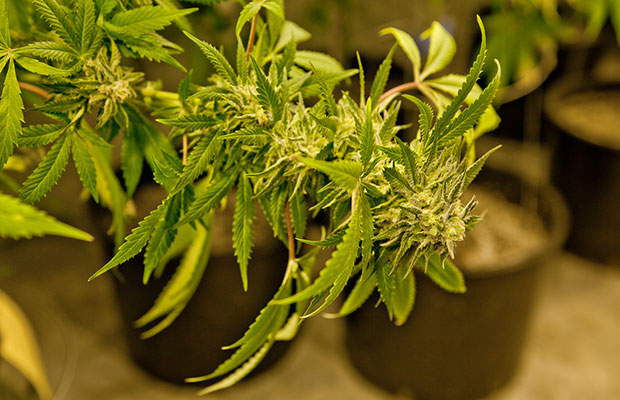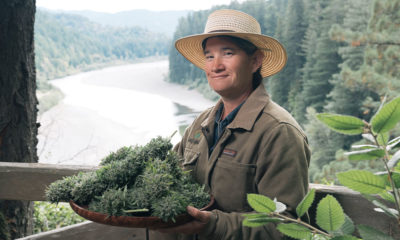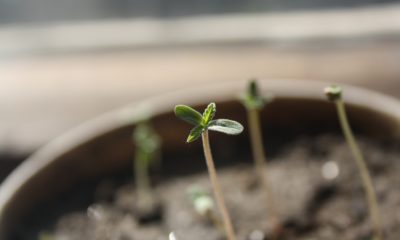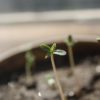Cultivation
Combating Nutrient Deficiencies
Photo by Gracie Malley
Not every nutrient solution on the market today will be able to cover all the bases when it comes to providing complete nutrition to plants. That’s why it’s so important to find a nutrient formula that has as wide a range of essential nutrients as possible. It’s a good idea to purchase different formulas for each stage from the rooting/cloning stage to the green foliage growth stage through the budding stage.
While it might sound like overkill, it’s not. Hormone supplements can speed up root growth, ensuring a large and healthy plant that will have a high yield when harvesting time comes around. Every seed that takes root has enough trace elements in it to last until middle age. After that, trace elements must be introduced to the nutrient solution to keep the plant healthy. If the plant is starting from a clone, it’s advised that trace elements be introduced in this early stage when roots are forming. They are essential to future healthy growth.
The most common deficiency is nitrogen. Cannabis is a fast growing plant and needs tons of nitrogen to ensure full growth. When there is a nitrogen deficiency, the stems will become an unhealthy red and the leaves will start growing yellow. Adding nitrogen will cure this malady in a day or two after upping the content to a higher level. The affected parts of the plant, however, will be damaged permanently. If a leaf is pure yellow, the best thing to do is simply cut off it off to prevent the plant from expending energy trying to repair the damaged leaf. If there’s only one or two fingers of the leaf that are yellow, cut those pieces off and leave the fingers that are still green.
Phosphorous is another essential element. It’s one of the most common nutrient deficiencies that will plague an otherwise healthy plant. When there’s a problem, the plant will start showing red stems and deformed leaves. Oddly enough, some leaves will actually appear too green. Compare an older growth leaf with a newly grown leaf to spot this deficiency. If any leaves are yellow, prune them off.
Another issue is encountering a potassium deficiency, which is often mistaken as a lack of phosphorous. When there is a shortage in potassium the leaves start to turn under themselves. After increasing the potassium, there may be a reduction in the yellowing of the leaves for a day or two. If not, it may be beneficial to prune the yellow leaves.
Noticing round, yellow spots on the leaves is an easy way to spot a calcium deficiency. For this common malady, combine one teaspoon of dolomitic lime per liter of water and spray it in a mist over the affected area. If this malady is identified quickly, it won’t be necessary to trim the lower leaves. If it hasn’t been identified before holes have developed in the leaves, they will have to be trimmed. Use a paper hole punch to remove the yellow spots to prevent the areas from rotting and stunting the growth of the plant or adding a moldy odor to the buds later on.
One of the hardest problems to spot is a sulphur deficiency, which makes leaves look transparent, with the yellow part being within a semi-transparent green layer. Foliar feeding with 2 percent Epsom salts in a liter of water will combat this issue. Luckily, sulphur deficiencies won’t affect the plant all that much if it’s caught early, but if left too long, the leaf will die.
If the leaves are whitening and the veins within the leaf are dark, it will be necessary to increase the amount of magnesium in the nutrient solution. This common affliction is one that occurs within the green growth stage and is easily cured with a simple increase in magnesium in the nutrient solution. However, if there is too much magnesium in the nutrient solution, the top leaves will grow yellow and die. To combat this, lower the magnesium in the nutrient solution and add manganese.
Iron is considered a trace chemical, but when the plant runs out of iron, the leaves will whiten and the veins will grow dark. To fix this, add a good trace element solution to the nutrient solution. Iron is famous for combining chemically with the other constituent parts of a solution, but is still an essential element that must be present.
If new growth is appearing burnt or is a slimy-looking brown, there’s a boron deficiency which can easily be fixed by adding just a little bit to the solution. The most common source of boron is boric acid, so make sure the nutrient solution is pH balanced before it’s fed it to the plants.
No single nutrient solution is perfect. There will always be holes in the nutrient’s makeup, making it vital to keep a close eye on the plants. The elements, their identification and their remedies as they are stated here will help ensure a good crop — whether it’s three or 30 plants being grown.
How do you deal with nutrient issues when you’re growing? Share your tips in the comments.


























